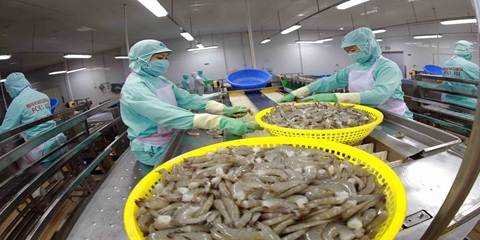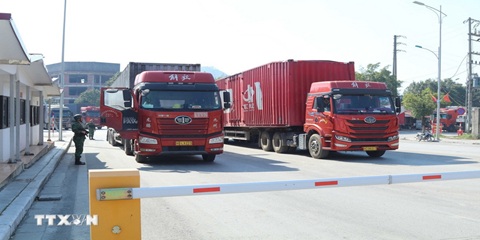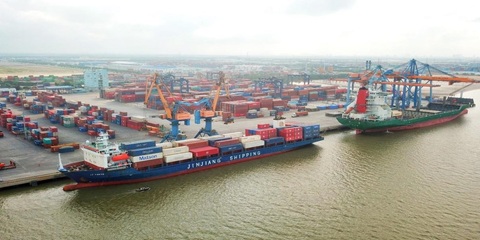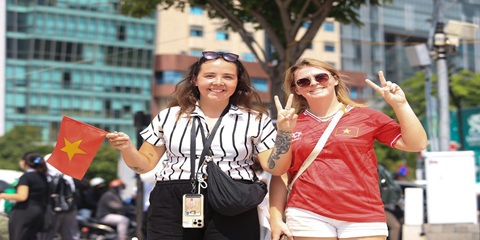Want to be in the loop?
subscribe to
our notification
Business News
CONTAINING COVID-19 WAVE, STAYING PREPARED FOR NEW WAVE OF FOREIGN INVESTMENT
The success story in Covid-19 fight could be the key for Viet Nam to win trust from the international community, including foreign investors, in the post-Coronavirus period.
Last November, Viet Nam reported the first local infection of Covid-19 after nearly three months without a single community transmission case.
Immediately, Prime Minister Nguyen Xuan Phuc ordered Vietnamese competent authorities to promptly take actions to trace, zone off and quarantine related people in order to prevent the third wave of local infections.
Since it was confirmed in Ho Chi Minh City - the country’s biggest economic engine - on November 30, only two more community infection cases were reported during the past week, which indicates the effectiveness of the country’s containment measures.
While pandemic is still evolving swiftly and complicatedly around the world with total infections surpassing 6.5 million, Viet Nam’s patient tally stood at 1,367, including 1,224 recoveries and 35 fatalities as of 6:pm on December 7.
Thanks to early and drastic measures, the pandemic has been basically put under control in Viet Nam, paving the way for the Southeast Asian country to reboot the economy.
According to the General Statistics Office, total trade between Viet Nam and the rest of the world was estimated at US$489.1 billion in the first 11 months this year, up 3.5% from the same period last year.
The World Bank expected that Viet Nam will grow by 2.8% this year even as its neighbor struggle to recover from the ongoing crisis.
In September, the World Bank conservatively estimated that GDP collapse in 2020 could be at 6.1% in Malaysia, 9.9% in the Philippines, and 10.4% in Thailand.
Together, the ten members of the Association of Southeast Asian Nations (ASEAN), excluding Brunei and Singapore, could register a GDP contraction of 4.7% in 2020.
With the above scenario, the only seeming bright spot in Asia is Viet Nam, which ably balanced public health and economics right from the onset of the pandemic.
It is worth noting that after only three weeks of social distancing in April, Viet Nam resumed manufacturing activities, faster than other countries did in the region.
A new wave of foreign investment
Despite the Covid-19 pandemic, foreign investors committed to pouring US$26.43 billion in January-November period, or equivalent to 83.1% compared to the same period last year, official data showed.
Meanwhile, disbursed volume of foreign investment witnessed a year-on-year decree of 2.4% to US$17.2 billion in the reviewed period.
These above figures reflect foreign investment’s high confidence in the Southeast Asian market, which would be further forged by the signing of the Regional Comprehensive Economic Partnership (RCEP) last November.
The RCEP is the world's biggest free trade area measured in terms of GDP and is expected to help signatories to mitigate the crippling cost of the Covid-19 pandemic and ease financial pain.
In the light of Covid-19, the trade deal could enable ASEAN to bounce back more quickly as such a deal allows firms to diversify their supply chains and increase resiliency of the regional economies.
Back in June, Prime Minister Nguyen Xuan Phuc decided to establish a special task force responsible for promoting foreign investment cooperation amid strategic shift of supply chains.
Do Nhat Hoang, Director-General of the Foreign Investment Agency under the Ministry of Planning and Investment, said Viet Nam is likely to count on a new wave of foreign investment as the world’s leading technological companies have taken initial steps to expand operation in Viet Nam.
LG Electronics has moved its entire smartphone production line from South Korea to Hai Phong City in northern Viet Nam, according to the Viet Nam News.
Panasonic plans to move a large production line that makes refrigerators and washing machines from Thailand to Viet Nam in September to improve cost efficiency.
Through its key contractor Foxconn, US tech giant Apple expanded production of its wireless earphones, AirPods, in Viet Nam to four million in the second quarter of this year, or 30% of the entire AirPods output.
Apple is also said to have listed many job vacancies in Viet Nam on LinkedIn, indicating plans to expand its manufacturing in the country.
In February, Heineken invested $68.8 million in Ba Ria-Vung Tau Province to raise its investment to US$381 million. It has increased the production capacity of its plant in the province from the current 610 million litres a year to 1.1 billion liters.
In March, the US’s Universal Alloys Corporation opened the first phase of its US$170 million aerospace components factory in Da Nang City to manufacture aerospace components from aluminium alloys and composites. It is expected to export products worth US$25 million next year, US$85 million in 2022 and US$180 million after 2026.
In June, Qualcomm Viet Nam set up a new research and development facility in Ha Noi, its first in Southeast Asia.
It is clear that the collapse of global trade has hit hardest the countries that primarily depend on exports but Viet Nam, with export of goods constituting 100.9% of its GDP in 2019, has stood out as a miracle as evidenced by positive economic growth rate, strong foreign investment inflows, and more importantly becoming adaptive to global investment relocation wave.
Source: VGP
Related News

VIETNAM’S SEAFOOD EXPORTS HIT OVER US$10 BILLION IN JAN-NOV
Seafood export revenue in November alone amounted to nearly US$990 million, up 6.6% year-on-year. Key product groups posted solid gains. Shrimp exports rose 11.7% to over US$385 million, supported by strong demand for whiteleg shrimp and lobster. Tra fish shipments increased 9.7% to almost US$197 million, while marine fish, squid, and mollusk exports maintained their recovery.

VIETNAM’S AGRO-FORESTRY-FISHERY EXPORTS HIT NEW RECORD IN JAN-NOV
Vietnam’s agro-forestry-fishery export revenue reached an estimated US$64.01 billion in the first 11 months of 2025, up 12.6% year-on-year and surpassing the full-year record of US$62.4 billion set in 2024. Agricultural exports reached US$34.24 billion, up 15% year-on-year, while livestock products brought in US$567.4 million, a 16.8% increase. Seafood exports rose 13.2% to US$10.38 billion, and forestry products earned US$16.61 billion, up 5.9%.

HANOI REPORTS RECORD-HIGH BUDGET REVENUE IN 2025
Hanoi’s budget revenue is estimated to reach VND641.7 trillion in 2025, the highest level ever recorded and nearly 25% above the revised target, according to a report by the municipal government. Data from the city’s socioeconomic performance review shows that total state budget collections in 2025 are projected to reach 124.9% of the adjusted plan and rise 24.9% from 2024, the Vietnam News Agency reported.

VIETNAM, CHINA TO PILOT TWO-WAY CARGO TRANSPORT AT LANG SON BORDER
Vietnam and China will launch a one-year pilot program on December 10 to allow two-way cargo transport through the Huu Nghi–Youyi Guan international border gates in Lang Son Province, reported the Vietnam News Agency. The Dong Dang-Lang Son Economic Zone Management Board said the trial aims to reduce transport costs and improve customs clearance capacity.

VIETNAM’S IMPORT-EXPORT VALUE NEARS US$840 BILLION IN JAN-NOV
The total value of Vietnam’s imports and exports was nearly US$840 billion between January and November this year, the highest level ever recorded, according to the National Statistics Office. In its latest report on the country’s socio-economic performance, the National Statistics Office highlighted a series of positive economic indicators, with trade emerging as one of the strongest drivers of growth.

OVER 19 MILLION INTERNATIONAL VISITORS COME TO VIETNAM IN JAN-NOV
Vietnam received more than 19.1 million international visitors in the first 11 months of 2025, a 20.9% increase year-on-year and the highest level ever recorded, according to the National Statistics Office. The figure surpasses the full-year record of 18 million arrivals set in 2019, before the Covid-19 pandemic. Nearly two million foreign visitors arrived in November alone, up 14.2% from October and 15.6% from the same period last year.
























